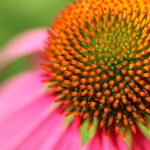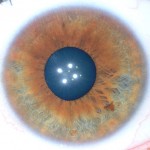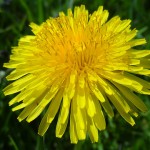It’s not nutritional therapy and it’s not functional medicine: or is it? Naturopath Jackie Day, ND, MH, NI, FGNI, FNNA, MAMH, chair of the General Naturopathic Council , explains the scope of modern naturopathic practice – and introduces a new opportunity for qualified practitioners to earn an ND.

photo credit: Creativity+ Timothy K Hamilton via photopin cc
Sometimes you get an answer you didn’t bargain for. When preparing this article I asked several people “What does a naturopath do?” A response I didn’t see coming was “Aren’t they all hippytrippy?” So that’s who all those people ramping through the muddy fields at the Glastonbury Festival are. My question was a serious one, because in the UK the huge benefits f consulting a naturopath seem to be poorly understood, but why? This leads me to a conundrum: if you put ten naturopathic practitioners in a room and ask each of them to define the work of a naturopath, how many different answers would you get? Possibly ten. At General Naturopathic Council (GNC) meetings we’ve found it difficult to agree a clear definition to describe the work of a naturopath. That’s because naturopathy isn’t a therapy; rather it’s a set of philosophies and principles used in practice alongside all manner of therapeutic skills.
To complicate matters further, in the UK we have naturopaths and naturopathic practitioners. Graduates of naturopathy courses will be awarded the universally-recognised naturopathy diploma (ND) entitling them to use the title naturopath. Many practitioners, from a range of CAM professions, incorporate naturopathic principles and they may consider themselves to be naturopathic practitioners. In the UK we also have naturopaths who have graduated from colleges in Australia, where curricula are different. In the US, there is even more complication, since there are both thousands of practitioners practising some variation of naturopathy learnt in courses ranging from part-time to correspondence, while there are also graduates of highly competitive fulltime 4-year post-graduate trainings aimed at being the equivalent of medical school. These schools, like the famous Bastyr University, award a doctorate of naturopathic medicine. Graduates use the protected title “naturopathic physician” and refer to themselves as doctors. (And, in some states these NDs have the right to perform minor surgery and prescribe a limited number of pharmaceuticals.) So, it’s not surprising it’s difficult to define the work of a naturopath.
The GNC is a forum for the profession, with the aims of being inclusive and to maintain the highest standards. Its member professional associations (PAs) vary in therapeutic specialisms but share a common thread, namely their members use a naturopathic approach in practice. Some PAs accept as members only fully-qualified naturopaths, others also accept naturopathic practitioners. Our member PAs are: the Association of Master Herbalists, Association of Naturopathic Practitioners, Guild of Naturopathic Iridologists, Incorporated Society of Registered Naturopaths and the Naturopathic Nutrition Association.
The GNC’s website identifies the therapeutic qualifications of individual registrants; this information promotes transparency, helps to remove a cloak of mystique, and hopefully removes that “hippy-trippy” image from the profession. It promotes naturopaths as specialists in their fields; this is important, because it enables the public to make an informed choice. After all, there’s no point in booking an appointment with a naturopath who specialises in osteopathy if you think a naturopathic herbal medicine approach is the answer to your health problems. However, it’s important to look at naturopathy as a multidisciplinary approach to healthcare that blends age-old healing traditions with scientific advances and current research.
The naturopathic stool
The analogy of a three-legged stool is often used to explain naturopathy, the legs representing the causes of disease: biochemical (what we eat and how we eat affects the body’s make up or chemistry), neurological (we need effective nerve impulses) and structural/mechanical. The latter is an often overlooked but significant cause of health problems; for example, if we are slumped over a desk most of the day, poor posture can lead to a raft of disorders such as lung problems, fatigue, anxiety and increased allergic responses. Influencing the legs of our stool individually and collectively will be that 21st century scourge of stress and emotions. With a stool, when one leg breaks or is faulty the other legs lose their balance; naturopaths consider the human body reacts in the same way.
Many people associate the roots of naturopathy with the USA, but its principles go back a long way. In the 4th century BC, Hippocrates believed in viewing the whole person to look for a cause of disease, and using the laws of nature to induce cure. It was from this original school of thought that modern naturopathy takes its principles:
- Recognition of the healing power of nature (vis Medicatrix Naturae) – nature has the innate ability to heal the
body, given proper guidance and tools - Identify and treat the cause (Tolle Causam) rather than focus on presenting symptoms – there will be an underlying cause, ie chemical, physical or neurological (the triad of health)
- Do no harm (Primum Non Nocere) – begin with minimal interventions and proceed to higher level intervention
only if necessary - Treat the whole person – including physical, mental, emotional, genetic, social, environmental, and spiritual
factors. - Naturopath as teacher (Docere) – a naturopath empowers patients to take responsibility for their own health by
teaching self-care - Prevention is better than cure – a naturopath emphasises optimal wellness and the prevention of disease
The Roots of Nature Cure
Many early 20th century American naturopaths were European immigrants and to understand naturopathy in 21st century UK we need to look at the influence of those pioneers.
Back in 19th century Germany, Vincent Priessnitz developed the idea that “nature cure” could treat illness and injury, having observed how animals in the wild recovered. He began the development of modern hydrotherapy, the external or internal use of water in any of its forms (water, ice, steam). Hydrotherapy was used widely in ancient cultures before it became well-established as the traditional European water cure. Numerous studies have examined hydrotherapy’s potential immunomodulatory effects, with promising results. Outside of naturopathy so few practitioners employ this incredibly beneficial therapy that can also be taught to patients; it costs them nothing to incorporate simple hydrotherapy techniques in their own homes.
The name Natural Cure was coined in 1895 by John Scheel to describe a system for treating disease using natural modalities such as diet, fresh air and water. It was popularised by Benedict Lust, considered to be the father of American naturopathy. Nature Cure became more commonly referred to as naturopathy when additional therapies were accepted, such as the development of clinical nutrition by another German, Johann Schroth. Some naturopaths continue to adhere to the original
Nature Cure principles that were developed before the days of nutritional supplementation; the only supplements they employ are vitamins B12 and D, plus DHA. But the “triad of health” remains a consistent concept of the Nature Cure practice.
Lust had been taught hydrotherapy and other natural health practices in Bavaria by Father Sebastian Kneipp, who dispatched Lust to the USA to spread the word about this approach to health. In 1902 Lust purchased from Scheel the right to the term “naturopathy”, defining it as a principle and including therapeutic techniques of herbal medicine, homeopathy and hydrotherapy, plus dietary recommendations such as avoiding tea, coffee and alcohol.
Lief Boosts Naturopathy in the UK
In the first half of the 20th century, naturopathy was prospering in the UK. An influential exponent was Stanley Lief, who studied naturopathy and osteopathy in the USA before setting up the Nature Cure Resort at Champneys Spa. To support the triad of health, physical modalities such as therapeutic exercise, massage, energy work and naturopathic manipulation became an integral component of his practice. Nowadays, bodywork encompasses a range of treatment modalities that complement naturopathy perfectly.
The plurality of therapeutic techniques promoted by Lust, and developed by naturopaths such as John Harvey Kellogg, Henry Lindlahr and Bernard Jensen, is the cornerstone of naturopathy today in the UK, where naturopaths are traditionally
multi-qualified and are likely to have one or more therapeutic qualifications alongside a naturopathy diploma (ND). Drawing influence from other systems of healing such as TCM and Ayurveda, a wide range of therapeutic modalities will be incorporated within naturopathic clinical practice. They may include diet and clinical nutrition, lifestyle, hydrotherapy, homeopathy, botanical medicine and physical therapy. This is an awesome combination for patients, so much being available in one package. It’s like the best supermarket multi-buy.
The Fit with Functional
Where does naturopathy fit with the 21st century concepts of functional medicine (FM) and psychoneuroimmunology/ psychneuroendocrinology (PNI)? When I first learned about FM, my immediate reaction was, “Jeff Bland has discovered naturopathy!” Research into how the brain’s firing patterns impact on the immune system gave us the new branch of cell biology dubbed PNI by Candace Pert and colleagues. “Can anger or other ‘negative’ emotions cause cancer?” asked Pert. Along with researchers such as David Spiegel, Pert confirmed that immune activity can be directly enhanced or suppressed by emotional states. Does this mean we now have scientific backing for our naturopathic three-legged stool, confirmation that if you break one leg the whole thing falls apart?
FM and PNI have strengthened aspects of naturopathic practice, with FM investigating the causes of disease and exploring the body’s attempts to restore homeostasis. It has added immense knowledge and a strong body of thought that explains scientifically what naturopaths have learned, and put into practice, from empirical evidence. PNI is able to provide naturopathic practitioners with the latest, evidence-based research into interactions between the nervous, immune and endocrine systems. While research is confirming naturopathic wisdom, it’s just as well those early naturopaths didn’t wait around for clinical corroboration. Hippocrates must be looking down, shaking his head in despair that it’s taken 2,400 years for the human race’s brightest brains to scientifically prove he was right to use the herb rosemary to boost brain performance.
Individualised
All this research is great, but much CAM research has focused on single modalities, specific supplements, and particular herbal constituents. This type of research is out of context with the wider CAM system used by naturopaths. The optimal research model for evaluating naturopathic interventions must allow for individualised, multifaceted therapeutic strategies, and their potentially synergistic results.
FM practitioners often employ extensive questionnaires and use lab tests to provide scientific justification for therapeutic recommendations, whereas many naturopaths use assessment techniques such as iridology and kinesiology. In the hands of well-trained practitioners both are excellent tools to help identify root causes of disease. They provide instant information and don’t involve additional costs to the patient, though naturopathic practitioners will use lab tests when necessary. A naturopathic assessment takes into account the web-like interconnection of the body’s organs and systems; Eric Yarnell, the author of Naturopathic Gastroenterology, considers effective naturopathic assessment and case history taking can provide around 98% of the answers needed.

photo credit: Joe Crawford (artlung) via photopin cc
Iridology has been extensively researched and is used by medical doctors in Germany and Eastern Europe. It gives practitioners a snapshot of the integrity of the body’s organs and systems, enabling them to instantly assess the patient’s constitutional tendencies, structural issues, and predispositions to various health conditions. The efficiency of the excretory organs, as well as levels of toxicity and congestion in organs and systems are easily assessed, providing iridologists with vital information to use alongside their therapeutic specialisms – eg nutrition, homeopathy and herbal medicine.
In the 1960s, George Goodheart, a chiropractor, correlated a connection between muscle behaviour, acupuncture meridians and body systems. Kinesiology (also known as functional neurology in some circles) provides an effective assessment tool to help identify imbalances, and points the way to the most appropriate naturopathic treatment.
Adding an ND to your Existing Qualification
Looking to the future, with the help of its PAs and colleges, the GNC aims to promote a profession that will command respect throughout the world. It is moving forward, giving it a voice within the international naturopathic community, forging valuable links to international PAs, registering bodies and training facilitators in the US, Australia, Eire and Europe. But equally, the GNC aims to support its registrants. One way it is doing just that is by giving its Associate registrants the unique opportunity to upgrade to full Registered Naturopath status by completing those naturopathic core elements that haven’t been learned in earlier training. As nutritional therapy plays a significant role in naturopathic practice, its practitioners, especially those trained in the naturopathic approach, find they have already completed a significant number of the naturopathic core elements.
This is proving to be an exciting opportunity. The GNC PAs have recently organised successful constitutional hydrotherapy and naturopathic adjustment technique (bodywork) upgrade courses. This opportunity, that puts the coveted ND within the reach of many nutritionally-trained and other qualified practitioners, is available to members of the PAs that register GNC associate naturopaths: the Association of Master Herbalists, Guild of Naturopathic Iridologists and the Naturopathic Nutrition Association.
Is naturopathy alive and well in the 21st century? Oh yes! But maybe sometimes it’s masquerading under different guises. Though it’s a somewhat depressing that some things haven’t changed since the days of the early naturopathic pioneers and we’re still preaching from the same hymn book, namely watch the tea, coffee and alcohol!
This article appeared in CAM Magazine


